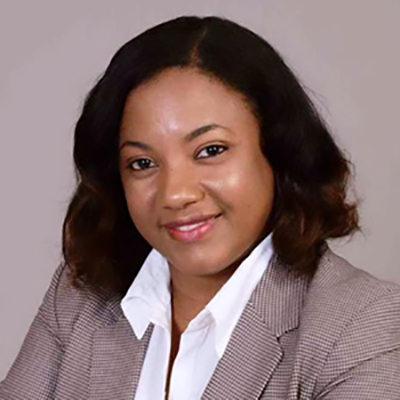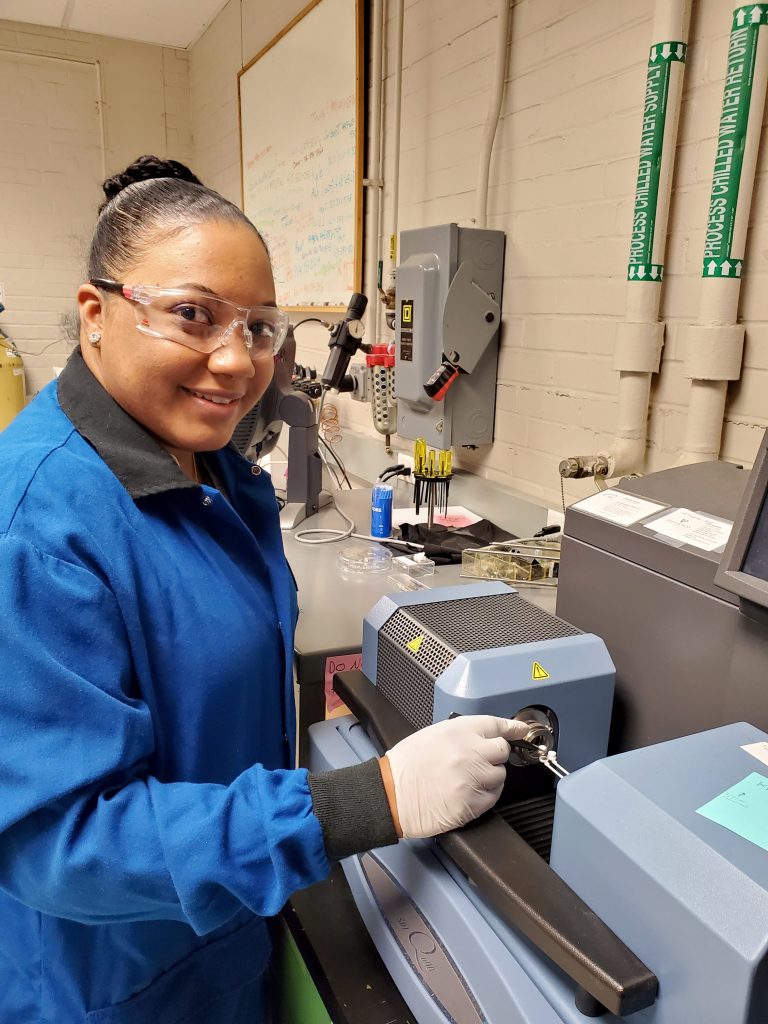Name: Kerri-lee Annique Chintersingh
Organization: Hopkins Extreme Materials Institute and Department of Materials Sciences and Engineering at Johns Hopkins University
Hometown: St. Mary, Jamaica W.I.
Hobbies/Interests Outside of Work: Crocheting baby blankets/hats, painting, going to the beach/river, travelling and exploring new cultures, teaching/mentoring 10-18-year-old students from the community
Research Area/Focus Area (as it relates to the MSEE URA): Research Area 2 / Focus Area 2: Materials and Manufacturing for Synergistic Effects / Tailoring Chemistry via Materials
and
Research Area 3 / Focus Area 2: Chemistry in Extreme Environments / High Temperature Properties and Chemistry of Agents and Simulants
How does the MSEE URA and its collaborative nature benefit you?
The MSEE URA provides the opportunity for young/ early-career researchers to expand their area of expertise and to gain significant exposure to a dynamic field related to high-temperature, high-pressure /extreme environments, and energetic materials. Because the consortium connects 40 leading experts (chemists, physicists, engineers etc.) from all over the US, I am able to build my network incredibly, forging collaborations with both national labs and universities and tapping into numerous resources and infrastructure from diverse groups. The boundaries on my research and proposed work are now broadened. Not only will I benefit from strengthening my background in combustion, metals, engineering and material science, but I am being exposed to novel experimental techniques and diagnostic tools, cutting-edge modeling and simulation capabilities and particularly, the growing field of AI/machine learning. The consortium allows the combination of theoretical, computational, and experimental tools leading to a more robust and wholistic research approach. This will help me become a stronger and more well-rounded researcher, preparing me for my goal of becoming a university professor.
How will the MSEE URA will be improved through your involvement?
My research experience on the tuning of metal powders for ignition and combustion applications will be particularly useful in Research Area 2 / Focus Area 2. I will be able to not only contribute to the development of new experimental techniques and diagnostic tools for metal combustion, but I will extend my past CFD modeling and coding experience as a Process Control engineer in Jamaica for machine learning and other potential in-house simulations. I will be able to help in the development of mechanistic models that describe metal reactions during high temperature conditions, as well as provide expertise in powder characterization, thermal analyses and material preparation by high energy ball milling and wet chemistry. I hope to also contribute unique and fresh ideas for conducting in-situ characterization of metals/metal oxides for biological and chemical agent defeat and other surface-limited reactions, an area in which I am deeply interested. I am also excited to assist in the development and commissioning of a customized combustion chamber tailored to explore material combustion and chemical agent defeat at the Johns Hopkins University.
Describe your plans for collaboration within and external to the URA.
Within the URA, I intend to conduct collaborative work with the following researchers:
- Todd Hufnagel (XPCI imaging of combusting particles to view in-situ internal morphology and particle sizes. This will improve the understanding of combustion mechanisms of metals and complex multi-metal composites at high temperatures)
- Mark Foster (Optics and experimental diagnostics. Use of spectroscopy/optical tools to obtain time resolved and particle resolved temperatures and gas phase species emissions from combusting particles)
- Tim Mueller (Machine learning techniques for extracting key material information from high speed XPCI/optical color videos- data mining.)
- Nick Glumac (Spectroscopy and exploration of chemical agent defeat efficiencies)
- Edward Dreizin (Single particle combustion /aerosol combustion tests)
- Demitrios Stamatis (large scale combustion tests)
- Jennifer Gottfried (laser ignition and combustion evaluation at microsecond timescales)
Outside of the URA, my work will include personnel from the APS at the Argonne National Lab.


